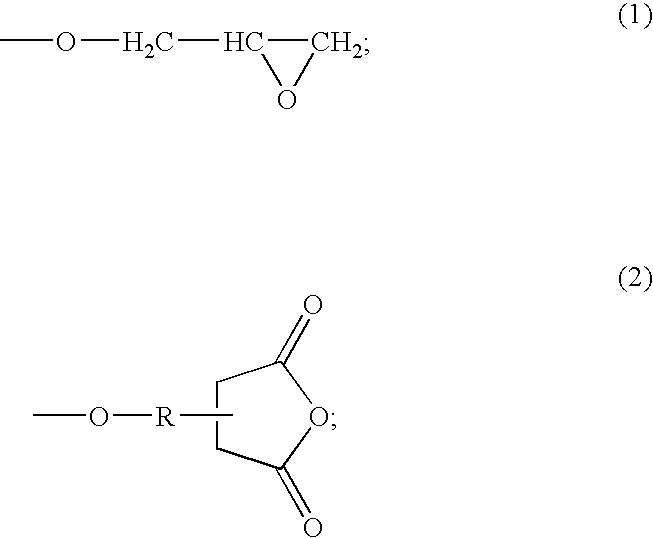Method of making carbon nanotube patterned film or carbon nanotube composite using carbon nanotubes surface-modified with polymerizable moieties
a carbon nanotube and surface modification technology, applied in the field of carbon nanotube surface modification and carbon nanotube composites, can solve the problems of unstable self-assembled monolayer of trimethylsilyl groups and the lik
- Summary
- Abstract
- Description
- Claims
- Application Information
AI Technical Summary
Benefits of technology
Problems solved by technology
Method used
Image
Examples
production example 1
Purification of Carbon Nanotubes
[0098]In a 500 ml flask equipped with a reflux tube, 100 mg of carbon nanotubes (ILJIN CNT AP-Grade, Iljin Nanotech Co., Ltd., Korea) was refluxed with 50 ml of distilled water at 100° C. for 12 hrs. After recovering by filtration, the carbon nanotubes were dried at 60° C. for 12 hrs and washed with toluene so as to remove residual fullerene. Then, the remaining soot was collected and heated at 470° C. for 20 minutes, followed by washing with plenty of 6M HCl solution to afford pure carbon nanotubes without metallic impurities.
production example 2
Surface Modification of the Carbon Nanotubes with Carboxyl Groups
[0099]In a sonicator filled with a mixed acid solution of nitric acid and sulfuric acid (7:3 (v / v)), the pure carbon nanotubes obtained from the Production Example 1 were refluxed for 24 hrs. After recovering by filtration through a 0.2 μm polycarbonate filter, the carbon nanotubes were refluxed again in nitric acid at 90° C. for 45 hrs. Subsequently, the slurry was centrifuged at 12,000 rpm and the resulting supernatant was filtered through a 0.1 μm polycarbonate filter. Carbon nanotubes recovered from the filtration were dried at 60° C. for 12 hrs and dispersed in DMF, followed by filtration through a 0.1 μm polycarbonate filter for size sorting.
production example 3
Surface Modification of the Carbon Nanotubes with Acetylchloride Groups
[0100]In a flame-dried, 2-neck Schlenk flask under a nitrogen atmosphere, 0.03 g of the carboxylated carbon nanotubes obtained from the Production Example 2 was homogeneously dispersed in 20 ml of DMF by ultrasonification for 1 hr. To the dispersion was added 20 ml of thionylchloride and the reaction mixture was stirred at 70° C. for 24 hrs. At the completion of the reaction, the reaction mixture was diluted with anhydrous THF and centrifuged. The resulting brown supernatant was discarded and remaining pellet was repetitively washed with anhydrous THF three times. Black solid matter thus purified was subjected to vacuum drying at room temperature to afford acetylchlorinated carbon nanotubes.
PUM
| Property | Measurement | Unit |
|---|---|---|
| Percent by mass | aaaaa | aaaaa |
| Percent by mass | aaaaa | aaaaa |
| Percent by mass | aaaaa | aaaaa |
Abstract
Description
Claims
Application Information
 Login to View More
Login to View More - R&D
- Intellectual Property
- Life Sciences
- Materials
- Tech Scout
- Unparalleled Data Quality
- Higher Quality Content
- 60% Fewer Hallucinations
Browse by: Latest US Patents, China's latest patents, Technical Efficacy Thesaurus, Application Domain, Technology Topic, Popular Technical Reports.
© 2025 PatSnap. All rights reserved.Legal|Privacy policy|Modern Slavery Act Transparency Statement|Sitemap|About US| Contact US: help@patsnap.com



